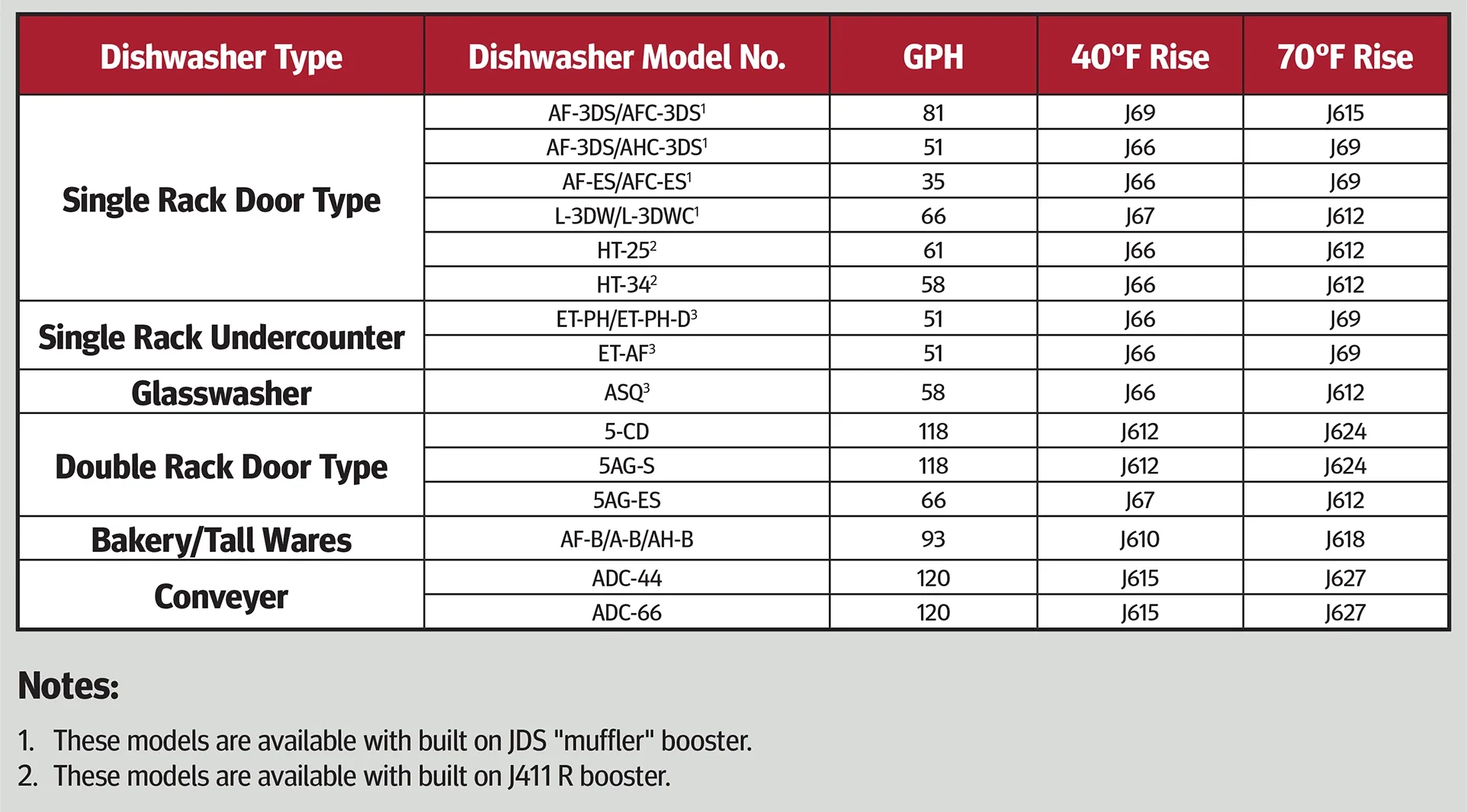News and Information

September 17, 2025
Hubbell J Model Booster Heater Selection Guide
As a foodservice tech, you’re a fixer and you’re a matchmaker. Every kitchen is different: different floorplans, different needs. It’s your job to determine the right equipment for every kitchen. For booster water heaters, this means understanding water temps, GPH requirements, and the real-world demands of that kitchen. Get it right, and the thing hums along for years. Get it wrong, and you're back next week with a wrench in hand and a frustrated client.
Understanding Dishwasher Booster Heaters
Booster heaters are specialized water heaters designed to raise the temperature of incoming water to the required sanitization levels for dishwashers. Specifically, for high-temperature dishwashers that rely on hot water, rather than chemicals, for sanitization. These hot water booster heaters are sized so the selected kW matches the dishwasher’s demand, factoring in temperature rise and gallons per hour (GPH).
Hubbell Booster Heaters
Hubbell electric booster heaters are built to last in demanding foodservice settings. Technicians get clear access to all components, making repairs faster and easier. The stainless-steel tank has no internal lining, reducing the chance of corrosion over time. Each unit includes electronic controls with a digital display. All Hubbell booster heaters use the same three electronic parts: T1000 Control Board, TD1000 Digital Display, and P65 Probe Sensor. Leak detection comes standard. UL, cUL, ASME, and NSF approvals back the build. Units ship same day, and the tank carries a 10-year warranty.
The 3 Key Factors in Selecting a Booster Heater
Temperature Rise Requirement: Determine the temperature of your facility's incoming water. Subtract this from the desired final rinse temperature (usually 180°F) to find the required temperature rise. Common temperature rise needs are 40°F or 70°F, but Hubbell manufactures booster heaters for a wide range of temperature rises.
Dishwasher Rinse GPH: Identify your dishwasher's final rinse water usage in gallons per hour. This information is typically available in the dishwasher's specifications or user manual.
kW Requirement: To determine the correct booster heater size, you'll need to calculate the kW requirement using your dishwasher’s GPH rate and the desired temperature rise. The formula is: kW = GPH × °F ΔT × 0.00244 Where ΔT is the difference between your desired final rinse temperature and your incoming water temperature.
Matching Booster Heaters to Dishwasher Types
For almost every dishwasher type, GPH, and temperature rise requirement, Hubbell has a compatible J model booster heater. Review the table below to find yours.

Overall, booster heater selection is a straightforward process. Start with your temp rise and flow rate, double-check the kilowatt requirement, and match it to the model that fits your space and setup. A little prep upfront saves headaches later. No callbacks, just hot water on demand. That’s the goal. For detailed specifications, sizing charts, and options, please review our brochures. Reach out to your equipment supplier or contact us here for more selection support or quotations.
Reliability is not just a word for us – it's everything we do.
Hubbell offers the best booster heaters available. They consistently and accurately deliver hot water when needed. For over a century Hubbell has delivered commercial food service equipment that stands up to the rigors of even the busiest kitchens (and busiest service techs). Contact us today and experience the Hubbell difference.
